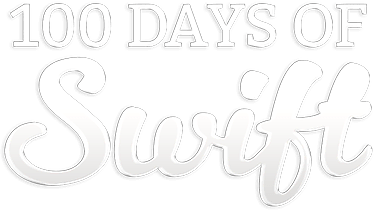
DAY 92
Project 28, part one
Bruce Schneier – a well-known US cryptographer, security analyst, and writer, once said “if you think technology can solve your security problems, then you don't understand the problems and you don't understand the technology.”
You see, although computers are remarkable machines, ultimately they just do what we tell them – albeit extraordinarily quickly. Way back in 2004, a Windows compression program called WinZip added AES encryption to their software, to help folks keep their data secure. AES was (and still is) a worldwide standard for quality encryption, but the problem was that WinZip screwed up their implementation so they managed to make it insecure. Back then, Bruce Schneier was already a titan in the security industry, and he said this: “cryptography is hard, and simply using AES in a product does not magically make it secure.”
Fast forward to today, and you’ve already learned how to store user data using UserDefaults, but there’s a problem: just putting data into UserDefaults does not magically make it secure. In fact, UserDefaults is anything but secure – it’s possible to get data out of there easily, so it’s definitively the wrong place to store sensitive information.
To fix that – to put data somewhere safe – you need to learn how to use the iOS keychain, which is automatically encrypted by the system. To make things a little more spicy I’ll also be introducing you to biometric authentication, which is a fancy way of saying you’ll learn how to use Touch ID and Face ID.
Today you have four topics to work through, and you’ll learn about the LocalAuthentication framework and the iOS keychain, get some practice with UITextView, and more.
Need help? Tweet me @twostraws!
BUILD THE ULTIMATE PORTFOLIO APP Most Swift tutorials help you solve one specific problem, but in my Ultimate Portfolio App series I show you how to get all the best practices into a single app: architecture, testing, performance, accessibility, localization, project organization, and so much more, all while building a SwiftUI app that works on iOS, macOS and watchOS.
Sponsor Hacking with Swift and reach the world's largest Swift community!
100 Days of Swift
The 100 Days of Swift is a free collection of videos, tutorials, tests, and more to help you learn Swift faster. Click here to learn more, or watch the video below.
